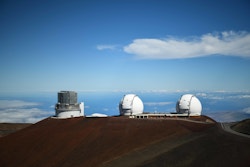Burning Earth
Recent extreme temperatures in Canada, growing forest fires due to drought and the alarming IPCC pre-report remind us, once again, that a sustained global warming above the threshold of 1.5°C would have irreversible impacts on human and ecological systems and would lead to more and more extreme weather events. Therefore, it is vital to make radical changes in our behavior at all levels: individuals, companies, institutions and governments.
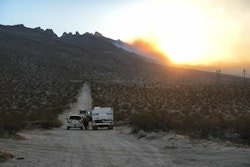
Wildfires in California
A brief history of science...
In the 1820s, a French mathematician and physicist, Joseph Fourier, formalized the greenhouse effect: the atmosphere naturally reflects part of the sun's radiation back to Earth. In 1861, an Irish physicist, John Tyndall, discovered that the gases responsible for this phenomenon are water vapor and carbon dioxide. Later, other greenhouse gases such as methane and sulfur hexafluoride were added to the list.
The phenomenon of global warming as such is attributed to the Swedish chemist Svante Arrhenius in 1896, when he correlated the increase of carbon dioxide (CO2) in the atmosphere with an increase of the Earth's temperature. He calculates that a doubling of the amount of CO2 in the atmosphere would lead to a warming of the temperature of about 5°C, and that it would take 3,000 years for such a phenomenon to occur.
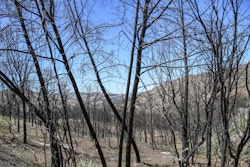
San Antonio Valley, California
In reality, considering how things are going today, we should reach this level in only a hundred years! In 1997, Japanese economist Yoichi Kaya developed a famous equation that links anthropogenic CO2 emissions to economic, demographic and energy factors.
According to Kaya, total CO2 emissions can be expressed as the product of four factors: population, GDP per capita, energy intensity and the amount of CO2 of the energy consumed. To make it simple, CO2 emissions are related to the amount of carbon dioxide needed to supply a given amount of energy, and the consumption of this energy is needed to achieve a desired standard of living (GDP/capita). All this being also dependent on the world population.

Figure 1: Kaya equation, formulating the link between CO2 (global anthropogenic CO2 emissions) and GDP (World Gross Domestic Product), POP (world population) and TOE, world primary energy consumption. Here:
- GDP/POP is the GDP per capita (average standard of living)
- TOE/GDP is the energy intensity of GDP (the amount of energy used to produce one euro of goods or services)
- CO2/TOE is the CO2 content of energy (the amount of CO2 emitted for a given amount of energy)
With the increase of the world population, the global improvement of the standard of living and our dependence on fossil fuels, it is possible to observe an ever increasing concentration of CO2 in the atmosphere. Since the 1950s, measurements taken at the Mauna Loa observatory in Hawaii (the same one that the Energy Observer teams visited during our stopover on the Big Island !) show a continuous increase of atmospheric CO2.
These measurements will form the Keeling curve, a graphical representation of the evolution of CO2 since 1958. Back in the days, the first climate models were developed to predict the impact of global warming on the world's climate.
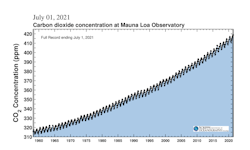
Figure 2: The Keeling Curve is a graphical visualization of the evolution of carbon dioxide concentration in the Earth's atmosphere since 1958. This curve is based on continuous measurements made by the Mauna Loa Observatory on the island of Hawaii. On the X axis you can find the years from 1958 to 2021, and the Y axis represents the concentration of CO2 in the air (mmol/mol).
…and diplomacy helping Earth
The main things we know today were therefore known at the end of the 1970s. It led to the idea of an international treaty on climate and the G7 meeting in 1979 in Geneva, with the first world conference on climate, which already concluded on the urgency to act to limit global emissions of greenhouse gases (GHG).
In 1988, the first Intergovernmental Panel on Climate Change (IPCC) was created and a United Nations Framework Convention on Climate Change was signed in 1992.
The Kyoto Protocol will put in place the first binding measures on GHG reduction, but it is with the Paris Agreement in 2015 that a universal framework of international cooperation will be adopted. But today, less than 10% of the signatory countries respect the assigned objectives...
More extreme climate phenomena and challenges facing Earth!
Meanwhile, the progression of the Keeling curve seems inexorable and the challenges that accompany it are huge.
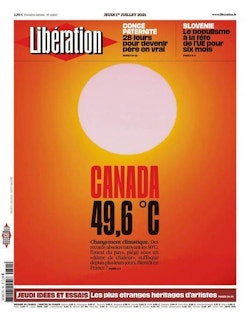
Many examples show that global warming is making heat waves more frequent, longer and more intense. They occur three times more often than in the 1960s and affect 25% more area in the Northern Hemisphere than in 1980. In the Northwest Pacific region affected today, researchers predict that heat stress will triple by 2100.
Our team of onboard reporters was able to document two phenomena on the Californian coast, during our stopovers last May, which are particularly relevant to current events: water stress and forest fires. These two impacts are the sides of the same coin: in California, global warming is generating air warming and less precipitation. Warmer air absorbs moisture from vegetation, which dries out more quickly, while less precipitation further accentuates this phenomenon. Forests therefore burn more easily.
More information in the two video reports below.
All over the world, a collective awareness and mobilization is emerging and strengthening. Our generation is the first to experience the effects of climate change, but also the last to be able to solve the problem. This is a great responsibility for future generations but also a great opportunity to rethink our existing models... including the energy model ! If we take up Kaya's equation, in order to reduce our CO2 emissions while maintaining our life standards, it is imperative that we free ourselves from fossil fuels !

The Eiffel Tower illuminated by green hydrogen energy!
To celebrate the opportunities of a shift to sustainable energy, the city of Paris & @energyobserver are lighting up Paris’ landmark sight using an electro hydrogen generator with certified renewable hydrogen.
As countries around the world are working to reduce emissions from the energy sector, green hydrogen is increasingly considered part of the solution. While challenges around cost and infrastructure remain, green hydrogen could help to decarbonize sectors like steel or shipping where electrification isn’t yet technological feasible.
#ItsPossible
Documentary sources
Sources
Vague de chaleur au Canada : le réchauffement climatique en est-il responsable ? - Nathalie Mayer, Futura Sciences
Atlas de l'Anthropocène - François Gemenne et Aleksandar Rankovic (Presses de Sciences Po, 2019)
To go further
The Limits to Growth - known as the "Meadows Report" - is a report supported by the Club of Rome published in 1972
Losing Earth: A Recent History - Nathaniel Rich, 2019. The book talks about the existence of scientific evidence of global warming for decades while it was politically denied, and the potential damage that will result.
